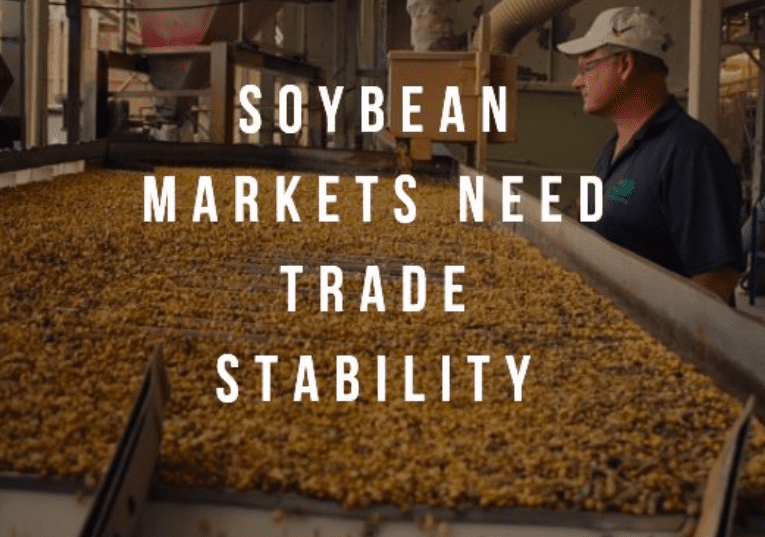This article from the AMIS market monitor, about market conditions in October 2018 describes some of the consequences of ongoing policy and trade disputes.
FOR FIFTEEN years, United States farmers have responded to China’s inexorable demand for soybeans by nearly doubling their output of the oilseed, even as other countries eagerly joined the soybean production race. 
While the flow of US soybean sales to China reached about 36 million tonnes (Mt) in 2016/17, today it has nearly halted.
In a retaliatory measure to US tariffs on a host of Chinese products, China imposed an additional 25 per cent tariff on soybeans coming from the US in July 2018.
Previously unthinkable distortions to trade flows and prices have emerged as a result.
Compounded by a bumper soybean crop in the US, owing to favourable weather and near record soybean acreage, US producers now face a triple price disadvantage: the soybean futures price plummeted to a ten-year low; the cash basis quotes in multiple growing areas dropped to historically low levels; and the carrying charge from this November to next has reached a record wide number.
In other words, US producers selling soybeans during this fall period are certain to make distressed sales. China’s hog and chicken producers (China today is the largest hog producer and pork consumer in the world) have also sustained economic burdens.
From a trader’s perspective, however, the real world of global soybean shipping is unrecognisable
Tariffs on US soybeans have caused soybean cargo prices originating from South American countries such as Brazil to rise to historic premiums over US cargo prices of around US$90/tonne.
This premium is roughly equivalent to Chinese buyers paying the 25pc tariff on US soybeans and is occurring while pork prices in China have turned down.
Even at these elevated South American prices, however, China cannot secure its projected imports of over 90Mt and will have to find new suppliers and indeed has recently agreed to import soy products from India for the first time.
Alternatively, it can buy larger quantities from the Americas – excluding the US – as Canada, Mexico and Argentina are taking increased quantities of US soybeans.
These countries, in turn, can take advantage of the abnormally wide arbitrage between US and non-US prices to satisfy domestic needs and boost exports. Finally, buyers in China could purchase US cargoes and pay the tariff, which anecdotally some have started to do.
According to the United States Department of Agriculture (USDA), around 1.3Mt (about 20 cargoes) are on the books to be shipped to China this year.
This decision is not without risks, however, since some industry insiders consider the tariff a de facto ban on US shipments.
USDA’s most recent balance sheet, which projects a modest 1.2pc drop in total US soybean usage, including crush and exports, might suggest only minor structural adjustments to prices and trade flows.
From a trader’s perspective, however, the real world of global soybean shipping is unrecognisable. With no resolution in sight, the economic tolls on the two countries engaging in a trade spat have reached historic levels, likely not projected in worst case scenarios, while other countries have gained the upper hand.
Source: AMIS market monitor.



HAVE YOUR SAY